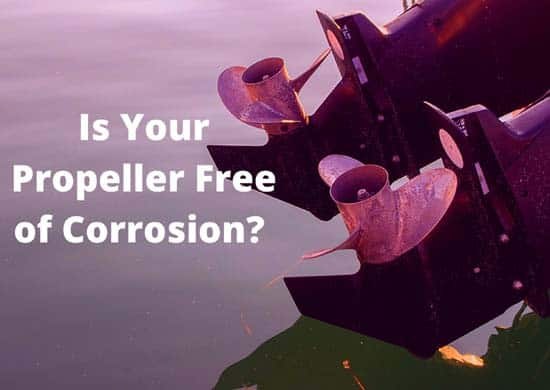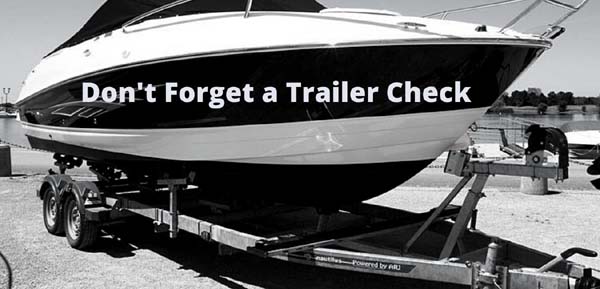As the winter ends and the weather starts to warm, it’s time to start thinking about getting your boat ready for some fun-in-the-sun. If you have never de-winterized a boat before, or maybe you need a refresher to make sure you take all the right steps, then keep reading to learn how to de-winterize a boat, step-by-step.
Just as it’s important to winterize your boat before the winter months hit, it’s just as important to de-winterize it before you even put it in the water for the first time of the summer.

Take The Boat Cover off
Remove the cover of your boat to start. During the winter, a variety of little critters may found their way under your cover and have been hibernating in your boat for warmth.
Give your boat a good looking over to make sure you don’t have any type of animals hiding out, like rodents or birds. A good, well-made canvas cover that fits snugly around your boat is the best boat cover. Even-so, there are some little critters that can still find their way in.
Check The Engine and The Propeller
Check your engine and propeller for any visible damage, corrosion or black suit from bad belts. Be sure to check all the belts for cracks and over-dryness, which can easily happen in cold, dry temps. Test your belts for a loss in slack by putting a little pressure on them. If they appear dry, cracked, or non-pliable; replace them. De-winterizing a boat engine is to check everything and don’t forget to do a trial run.

Make sure your propeller is free of corrosion, dents and loose parts. It’s a good time to give in a good inspection while it’s out of the water.
Refill The Cooling System
You should have drained your cooling system before the winter and flushed it out. If so, now you’ll want to refill it using a 50/50 coolant mixture – 50% water and 50% antifreeze.
Be sure to check all the hoses and lines to be sure they’re in good condition; not brittle and no cracks that can mean, leaks. Replace any hoses or lines that are not in good condition.
Check The Water Pumps and Thermostats
An important part of keeping your engine cool is a rubber part on the impeller. It is said that at approximately every 200 hours of use, this part should be replaced.
If you know how many hours you have racked up, it may be time to replace that part. This part helps water flow down to cool your engine. Make sure your thermostat is operating so you can tell if your engine were to ever become too hot or cold.
Check Cables and Hoses
Bad cables or hoses can cause big problems if they happen to break or leak while out in the middle of the lake. Be sure to carefully inspect all the cables and hoses for cracks, leaks, breaks or disconnects.
If you have any questionable cables or hoses, replace them and make sure they are installed correctly to avoid inconvenient issues.
Inspect The Boat Battery
Batteries don’t do well when sitting unused too long, especially in cold weather. Your battery should have been disconnected for the winter, and now you need to make sure it survived the winter and is still good.
Start by filling with water and hook it up to a battery tester to make sure it tests positive for a charge. If it does, clean the battery by removing any corrosion you may see around the terminals. If your battery fails the battery test, obviously you’ll need to replace it.
Clean The Distributor
The proper way to check your distributor is to remove the cap and check for corrosion. Like the battery, cold weather can cause corrosion to build-up and it will need to be cleaned if you find any.
Make sure the spark plugs are in place and tightened, and remove the plastic bag or covering you may have put over the carburetor for the winterizing process, as well.
Check The Fuel System
Hoses and fuel lines are another part of your boat’s components that can take a real hit during the winter months. Give your fuel lines a good looking-over to make sure there are no cracks in the lines and all the connections are still intact and tight.
Be sure to look over the hoses in the cooling system and the connection clamps, as well. You should have left your fuel tank full when you winterized the boat, and a marine fuel stabilizer should have been added to keep moisture from building in the tank – something that can cause a lot of problems.
Don’t forget to check your fuel filter to be sure it’s clean and in good condition. If not, replace it with a new one. Any lines or hoses in the fuel system that have cracks or appear in poor condition should be replaced, too. All that’s left is to top-off your tank with fresh fuel to fill it up.
Check for Stiff Steering
Check your boat’s steering and power steering fluid level. If your boat is displaying stiff steering, it could be directly related to a low level of steering fluid.
If your steering fluid is low, fill the reservoir with the correct type of power steering fluid and to the manufacturers’ recommended level.
Inspect The Boat’s Exterior
Take a good look at the exterior of your boat. Look for any obvious cracks, dents or damage that you think could lead to further issues or even a leak.
One way to keep track of any dents or damage from year-to-year is by keep a diagram of your boat and notating any damage in the area you see it. You can write out how the damage happened, too, so you don’t forget year-to-year.
Check for Worn Belts
Belts can go bad during the winter; getting stiff, cracked, and they lose their flexibility if they sit too long. Make sure all the belts are in condition and replace any that aren’t. You can look for soot on the engine as a sign that a belt might not be working properly.
Inspect The Bilge Pump
There are three important parts of the bilge pump and they all need to be checked for proper function before venturing out. They include; the pump, the automatic switch, and the circuit. They work together, so one non-working part and it could cause you a lot of problems.
Once the water gets into the bilge, it automatically triggers the pump, which is why you don’t want any parts of the bilge to be on-functioning.
Do a Trailer Check
If your trailer isn’t working properly, you could risk big problems hauling your boat. Check it to be sure all the wires and and attachments are up-to-code. It’s illegal to drive a trailer without proper turn signals and non-working parts, so be sure to test your signals are working right and replace bulbs if needed.

Don’t forget the tires and tire pressure. Add air or change bad tires, if you need to before you venture out with your boat.
Check That The Safety Gear is Working Or Not
Safety gear can get overlooked when de-winterizing a boat, but it’s important to be sure you have all your safety gear on-board, and it’s all operating properly. Life jackets, other flotation devices, flares, radios and other gear you have, won’t do you any good if they’re not in good shape or not working.
Clean Up Your Boat
No matter how well your canvas cover is made and fits, your boat will still need a good cleaning after sitting all winter, starting with the canvas cover itself. You should also do a thorough cleaning on all the vinyl seats, as well as the carpeting. If your boat has teak wood, you may want to spruce it up as well, with teak oil.
Paint The Bottom of The Boat
Now is a good time to get the bottom of your boat sparkly clean, free of gunk, mold or other things that take away from the visual appearance and maybe even the aerodynamics of the boat. After a good paint job, give your boat a good wash and wax to really make it shine for this year’s boating season.
There is a lot to know and do to make sure your boat is safe and operating at its optimum. You’re sure to have several questions about de-winterizing your boat, and here are a couple common questions you may have regarding de-winterizing a boat:
How Much Does It Cost to De-winterize A Boat?
The cost to de-winterize really depends on a few different things; mostly, the size of the vessel. The average cost is about $300, however, if you had a single, outboard motor, it may run about $100 to de-winterize the boat. On the other end of the spectrum, a large cabin cruiser could run in the upwards of $500-$600, and possibly more.
When Should I De-winterize My Boat?
There are some things you can get a little bit of an early start with, like removing your canvas and letting the boat air out, inspecting the outside of the boat and interior, and the such. This can be done in the early days of spring.
But when it comes to cranking the engine and activating the fluid systems onboard, you’ll want to be sure you’re past the point of a surprise freeze happening that can be damaging to the boat’s parts.
Can You Start A Boat That Has Been Winterized?
If you have taken all the recommended steps to winterize your boat, then you probably drained fluids and there may be some parts that are no longer in good condition if it’s been sitting a while, in the cold.
If you plan to start your boat after it’s been winterized, you will want to take the steps to ensure proper fluids are in place, as well as other de-winterizing steps that could risk harming the engine and other parts, if you don’t.
Is It Ok To Start A Boat Out Of The Water?
Boat engines require a source of water, so although you can start it and run it for a couple minutes for a quick test, you really need to have it connected to a water source, like a hose connected to the water intake vent, to safely run it while out of the water.
That being said, it is still very important to keep an eye on the temperature gauge to make sure the engine isn’t overheating.
Conclusion
In conclusion, in order to have a worry-free summer on your boat, make sure you follow all the recommended steps to de-winterize your boat before going out for the first time this season.
The more time you take and careful attention you pay to the details of de-winterizing your boat the right way, the more relaxed you’ll be, knowing your boat is in top condition for all the summer-fun you and your family plan to have out on the water.



